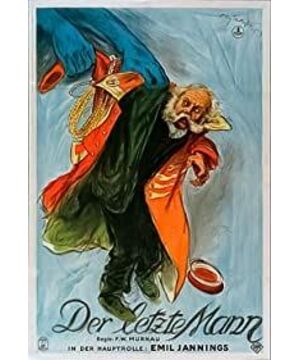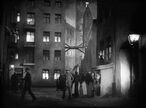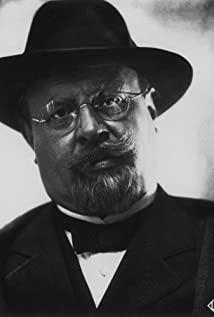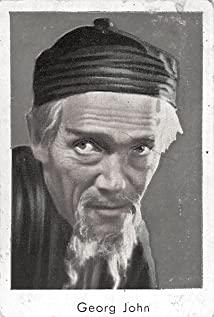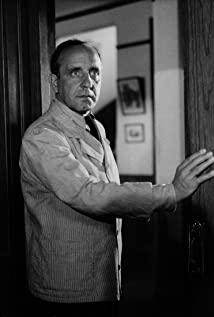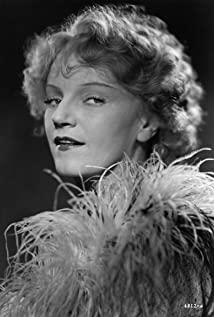The film "The Humblest Man", written by the German silent film master Karl Mayur and directed by Friedrich Münau, is in German literature and art after expressionist films in the early 1920s. The emergence of the tendency of "returning to the inner world" and the influence of Max Reinhardt's indoor theater is another German film genre, which is a representative work of indoor theater film. Carl Mayu is the creator of this new movie genre. Like the German indoor dramas, Mei Yu's indoor drama movies mainly describe tragedies in the lives of ordinary citizens. For example, "Shards" tells the story of the daughter of an inspector in a remote station who was seduced by a railway inspector who came here to patrol, causing her family to break down; "Back Stairs" tells the story of the love tragedy of a young maid; "New Year's Eve" is a story about a small hotel owner who hangs himself on New Year's Eve because he can't bear the family entanglement; "The Humblest Man" tells the tragic fate of an old and frail hotel Shou.
Indoor drama movies generally have only two or three main characters. They are no longer the demons or tyrants in expressionist movies, but some social "little people", such as railroad workers, postmen, maids, hotel stewards or shopkeepers Wait. They are mostly moral characters in the film, so they often have no specific names, but only symbolic names that explain their identity or occupation, such as: father, mother, wife, daughter, niece, or railroad worker, postman, secretary Hun, night watchman, etc. The story of the film takes place in the daily lives of these little characters. They lack joy, and their peaceful and unsurprising lives have suffered shock and destruction due to conflicts and entanglements from inside and outside the family. When this kind of impact and destruction reaches a certain limit, they either commit suicide out of despair in life, or rise up to resist out of instinct. But the object of their resistance is no longer the dictator, tyrant, or ghost and ghost like in the expressionist movies, but the oppressor and the cruel laws of life. Although most of the indoor drama movies run through the themes of love and death, and end the story with the death of the protagonist, they inevitably have a tendency of pessimism and fatalism. However, as a mirror of post-war German society, the room drama film reflects the fate of the little people in the chaotic social conditions of Germany during this period, and their instinctive struggle against the unreasonable society with little hope of success. Therefore, the chamber drama films and expressionist films that appeared from 1920 to 1924 were the products of the post-war era in Germany, and as the first two national film genres in Germany, they "like a huge haha mirror reflect the turbulent situation in German society." "At the same time, "at the pinnacle of progress" in art.
In 1924, Murnau filmed his most famous indoor drama film "The Humblest Man" based on the script of the famous playwright Mei Yu, which was another of his most influential works after "Nosferatu". It was also the pinnacle of film art creation before Murnau went to the United States. Through the tragic fate of an old hotel attendant in this film, Murnau and Mayu touched and criticized a deadly national character inherited from the German Empire and throughout German society: blind obedience to those in power. , Extols and believes in and worships authority. Mayu and Janowitz once revealed this tragic German national character in the script they wrote for "Dr. Caligari." As the supreme symbol of power, and proud of it" the worship mentality carried out a pungent irony and criticism. Regarding the inevitability of the film's appearance in Germany, the famous German film historian Lot Eisner once pointed out: "This petty civic tragedy comes from a country that sometimes regrets to treat uniforms as God." In this film In the middle, Mei Yu and Mao Nao also use some small props to express a certain moral or symbolic meaning. For example, the revolving door of the big hotel that was constantly turned by the old Sian, not only represented the authority consistent with the decent and majestic livery worn by the old Sian, but it was also the one "thrown away by fate" A symbol of "the reincarnation of fate between people and the old Sika", which turns into heaven and hell. In addition, in this film, they also consciously combined two completely different social classes-the living environment of the big bourgeoisie and the petty citizens, the big hotels where the rich and powerful people go in and out, the luxurious and luxurious life inside and the simple housing where the poor live. The poor lives they lived there made a sharp contrast, which gave this film a social critical standpoint. Taking poor citizens as the object of description and expressing the tendency of social criticism was very rare in German films at that time. It can be said that it is a major advancement in the theme and content of German films.
This film has made major innovations in photography technology. Mornau sees the camera as a "director's paintbrush" and believes that "the camera should be moved as much as possible in order to capture every fleeting atmosphere." In the shooting, he started from the plot and the needs of the characters, and required the camera to move, to be able to follow the shots, follow the shots, or shoot from different angles from top to bottom, so that photography not only shows the plot, but also becomes the psychological activity of portraying the characters. the wrist of. To this end, they unfastened the camera from the tripod and placed it on a car with rubber wheels, or tied it in front of the photographer’s belly, and used the motion of the elevator or gondola to shoot, which broke the fixation. The restraint of the camera position achieves the purpose of making the camera move and realizes the liberation of the camera. For example, the beginning of the film is a shot taken from top to bottom in motion: they put the camera in the elevator first, and let it take a panoramic view of the hotel lobby as it descends with the elevator, and then put the camera on a rubber sheet. In the car, the movement of the car went through the lobby to outside the turnstile (switching), and finally came to the street in front of the hotel, where the filming stood and drove to the oncoming old Siyun. In this way, the camera in motion can not only create a sense of distance, width and narrowness at will, but also give the movie a completely fluid visual narrative technology, allowing the audience to watch the development of the plot from all angles. As a result, the film has become more rhythmic, more vivid, more intuitive, and more pleasing to the eye than before, which has brought significant progress to the development of film art.
In this film, the excellent acting skills of actor Johnnings is another important factor for its success. He not only played an aging and frail old Sihua vividly, but also portrayed his complicated psychological activities in detail, which added a lot to the film. The success of "The Humblest" prompted Murnau and Jonnisl to collaborate again later, filming the last two films of Murnau before leaving Germany for the United States: "The Hypocrite" based on the famous play of the same name by the French dramatist Molière. (1925) and "Faust—A German Folklore" (1926) based on the famous German poet Goethe's famous book "Faust". Mornau's outstanding directing art and Johnson's successful performance have made these two films not only excellent works in German silent films, but also enjoy a certain status in the world's film history.
Unfortunately, the playwright Mei Yu finally added a Hollywood-style reunion ending to the film out of sympathy for the old Sihuan. For this reason, he let the mentally collapsed and waiting old Sika come to life. Because he rescued an American millionaire and accepted that man’s considerable inheritance, his fate suddenly changed overnight, and he arranged for the old Sika. Has created a beautiful, yet unrealistic future. This funny-comedy ending not only violates the truth of life, but also greatly weakens the huge tragic significance of the original old Sihua's fate and the social critical power of the film. It cannot be said that it is a "superfluous" failure.
View more about The Last Laugh reviews


